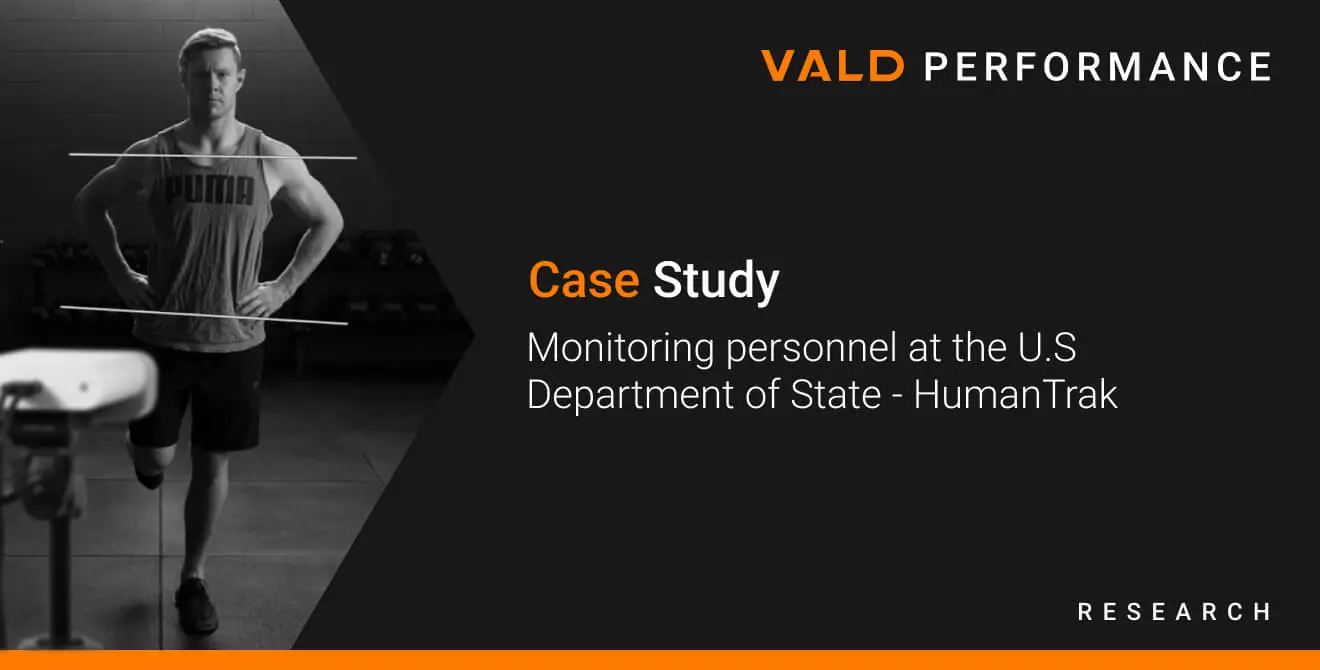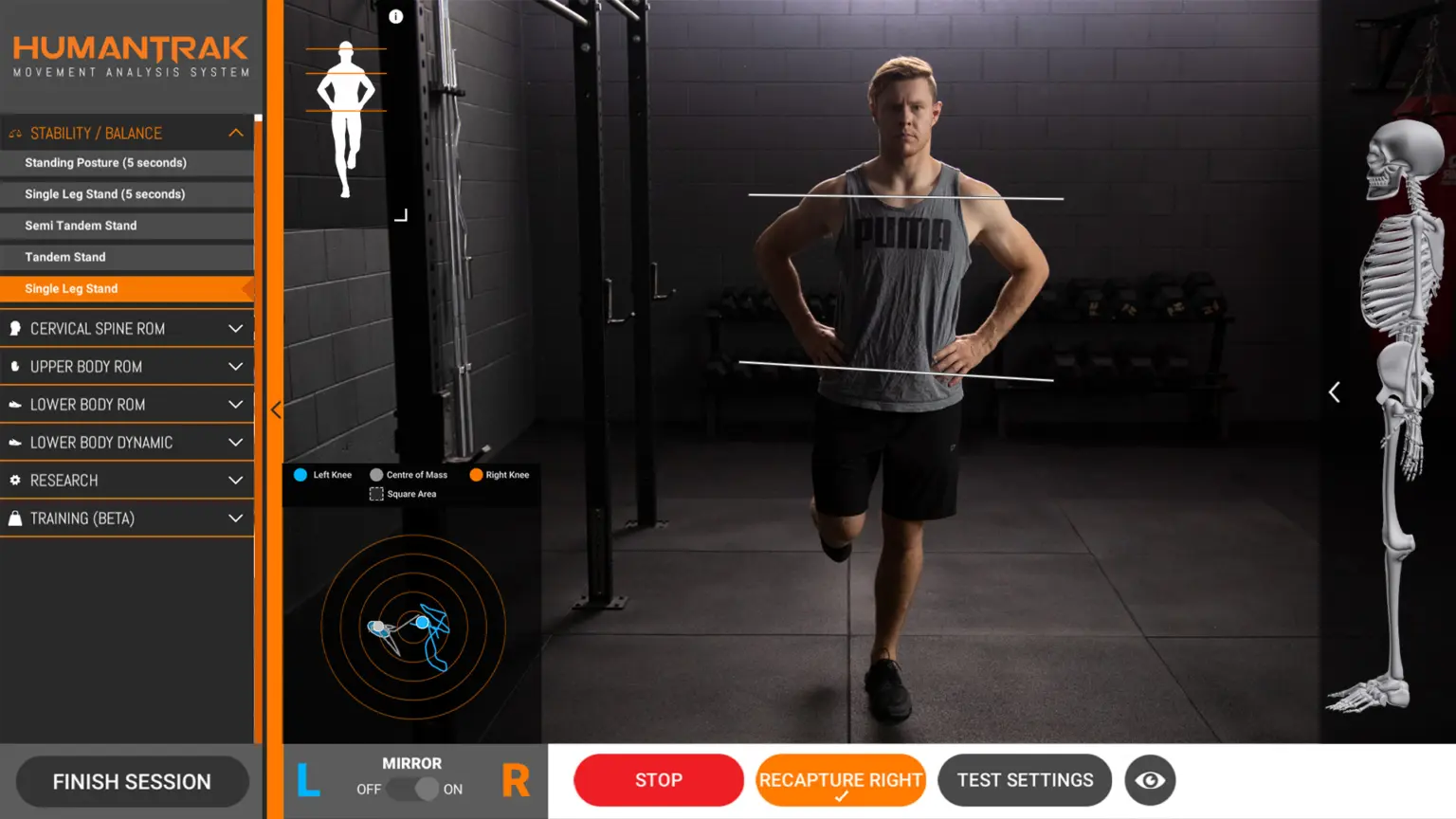Monitoring personnel at the U.S. Department of State – HumanTrak
Available in:
EN
In this case study, we gather insight into how Jacob Walker (Human Performance Optimisation Program Manager, U.S. Department of State) uses HumanTrak to gather data for analysing the injury risk of personnel.
Snapshot
The U.S. Department of State has a variety of personnel, all needing to maintain a certain level of physical fitness to perform their job while avoiding injury. Although there are already screening processes, the addition of HumanTrak allows the Department to collect objective data at an affordable price.
The Department has identified that there is a distinct need to reduce risk for lower-limb overuse and acute injuries. Since the personnel are strong anteriorly, HumanTrak has allowed Walker to visually demonstrate the posterior weaknesses and postural imbalances of personnel using objective data.
Improving communication between personnel, physical therapists, and other healthcare providers with HumanTrak
Walker notes that the data collected from HumanTrak has provided an efficient way to improve communication between key stakeholders and physical therapist contractors who are often in different locations.
As a strength and conditioning coach, he also uses the data to adjust programs, and sends the PDFs to agents so they can take it to their own physical therapists.
If an agent is posted to another location, then he usually asks them to introduce him to their physical therapists so he can better understand how to adjust their strength and conditioning program and track progress.

Causes to intervene with strength programs: Ideal metrics for single leg and overhead squats
Single leg squats
During single leg (1 leg) squats, Walker looks for:
- Strength asymmetries
- Weakness in frontal plane stabilisers
These could lead to lower extremity injuries along with decreased efficiency of movement during running and jumping.
Need for intervention if the agent shows:
- Dynamic valgus collapse
- Excessive trunk lean
- Knees going over their toes
Walker would then program or encourage the agent to train more unilateral movements such as 1 leg box squats, step ups, 1 leg Romanian dead lifts, bounding, and/or box jumps landing on one leg.
Overhead squats
During overhead squats, Walker pays attention to ankle, hip, and t-spine mobility.Need for intervention if the agent shows:
- Excessive forward lean
- Low back arching
- Arms falling forward
- Feet externally rotating
From his experience with the defense services population, Walker finds that these can usually be fixed with mobility and activation movements.
How the Department of State uses data collected from HumanTrak
Walker mainly uses data collection for:
- Identifying/flagging personnel in need of rehabilitation or exercise prescription to reduce injury risk. Afterwards, Walker can recommend a particular strength program.
- Longitudinal comparisons to see if personnel have improved.
How data influences decisions: Objective data versus subjective data
Walker has found that HumanTrak effectively demonstrates injuries or aspects that an agent otherwise would not notice or “believe is happening”. Walker emphasises, “the data and pictures are used to show the agent that it’s not just my opinion that there is a problem and lets them see what I see.”
HumanTrak has also assisted Walker with picking up on things that he would otherwise miss. This has helped Walker with adjusting types of overhead pressing, unilateral/bilateral exercise selection, traction modalities, and mobility movements.
The future of training at the Department of State
In the future, Walker is hoping to use HumanTrak to track improvements after an intervention is made. He is looking to have the opportunity to screen, train, then rescreen after 12-16 weeks of training. He predicts that reinforcing decisions will prioritise unilateral training and mobility work, especially after follow up screenings that show improvements.
Download/read the full case study.
If you have any further questions, or would like to enquire about HumanTrak, please see below.
